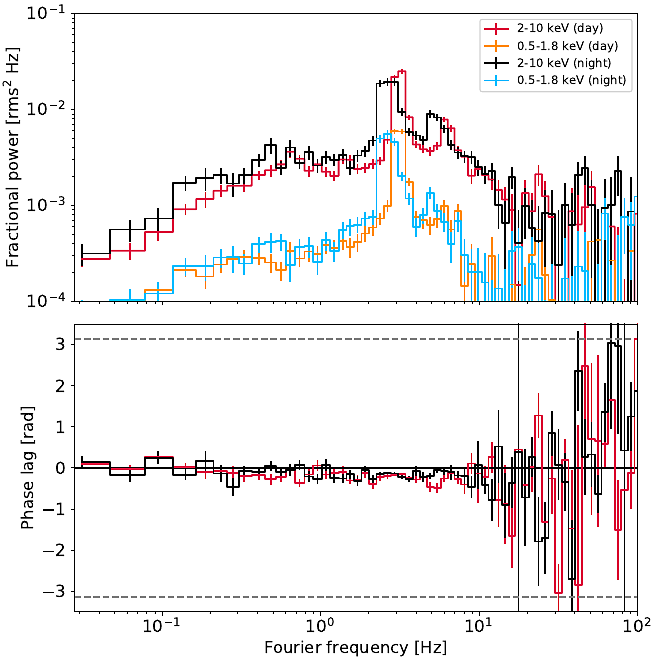A broadband spectral-timing study of QPOs in the bright black hole X-ray binary Swift J1727.8-1613

A broadband spectral-timing study of QPOs in the bright black hole X-ray binary Swift J1727.8-1613
Niek Bollemeijer, Phil Uttley, Bei You
AbstractSwift J1727.8-1613 went into outburst in August 2023 and was one of the brightest black hole X-ray binaries (BHXRBs) in recent years, leading to extensive observing campaigns by NICER and Insight-HXMT. The source exhibited strong X-ray variability and showed type-C quasi-periodic oscillations (QPOs) on a wide range of frequencies. The high data quality over a broad range of X-ray energies (0.5-150 keV) enables us to study the energy-dependence of the QPO waveform and the phase lags at the QPO fundamental and second harmonic frequencies. Using the biphase, we find that the QPO waveform is strongly energy-dependent, with energy bands below and above 15-20 keV showing opposite waveform evolution. We interpret the energy-dependence of the waveform as being due to a pivoting spectral component at the second harmonic frequency, with a pivot energy around 15-20 keV. Using the cross-spectrum, we find that the phase lags between energy bands above 7 keV at the QPO fundamental are small, while those at the harmonic frequency are dominated by a separate lag component that extends over a broader range of frequencies and relates to the broadband noise variability. Comparing the energy-dependent results obtained with the bispectrum and the cross-spectrum, we show that these two Fourier products extract different variability components, e.g. the QPO and the broadband noise, at the same frequencies. Finally, we compare Swift J1727.8-1613 to BHXRB MAXI J1535-571 and find that their spectral-timing properties are similar, indicating that these QPO properties may represent a subset of sources.